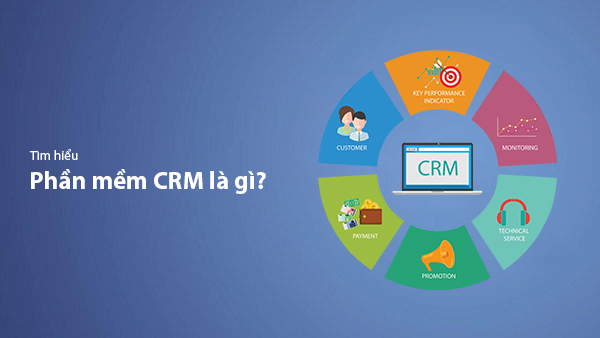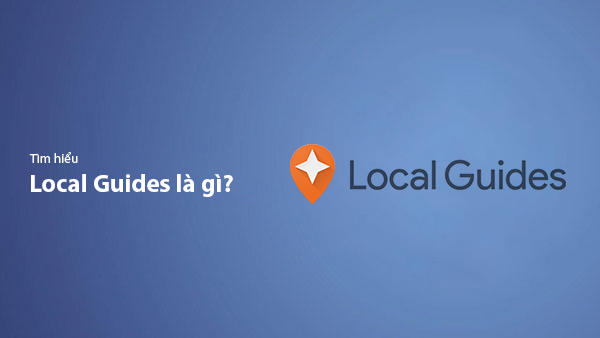Learn About Google Keyword Planner - Essential Keyword Research Tool From A to Z
- Published on

- What Is Google Keyword Planner?
- Benefits of Google Keyword Planner
- How to Use Google Keyword Planner
- Accessing Google Keyword Planner
- Choosing Between Discovering New Keywords or Getting Search Volume and Forecasts
- Filtering and Sorting Results
- Analyzing and Brainstorming Keywords
- Selecting Keywords
- Important Notes When Using Google Keyword Planner
- Useful Tips When Using Google Keyword Planner
- Use Keyword Filters Flexibly
- Combine with Google Trends to View Real-Time Trends
- Create Separate Keyword Lists by Topic Groups
- Optimize Keywords for Multiple Languages
- Monitor Performance After Running Campaigns
- Use Keywords to Build High-Quality Content Ideas
- Check Competitor Keywords
- Additional Keyword Research Tools
- Ahrefs Keywords Explorer
- SEMrush
- Ubersuggest
- Google Trends
- AnswerThePublic
- Keywordtool.io
- Combining Tools for Effective Keyword Optimization
- Conclusion
What Is Google Keyword Planner?
Google Keyword Planner is a free keyword research tool integrated into the Google Ads platform. It is an ideal tool that helps users find keywords related to products or services, providing detailed information about average monthly search volume, keyword competition level, and estimated cost-per-click (CPC). With its ability to deliver accurate data, this tool is not only suitable for SEO optimization but also highly useful for building effective ad campaigns on Google Ads.

For example, if you're implementing a content SEO strategy, using Google Keyword Planner will help you discover potential keywords to attract more traffic. This is also a crucial step when conducting keyword research for SEO-related articles, helping you understand how to optimize content according to user search trends.
Benefits of Google Keyword Planner
Google Keyword Planner offers practical benefits for both SEO experts and advertisers, helping them build precise and effective keyword strategies:
- Discover potential keywords: This tool helps you find related keywords that are untapped or have low competition, expanding your market reach.
- Determine search volume: Through data on average monthly search volume, you can assess the popularity of keywords to optimize content and advertising efforts.
- Analyze competition level: You can identify which keywords have high or low competition and focus on those that align with your budget and promotional strategy.
- Estimate advertising costs: This tool provides CPC estimates, helping you manage costs and optimize your budget effectively.
- Optimize Google Ads campaigns: Keyword Planner serves as an essential step in creating targeted ad groups that drive better conversion rates.
Using the right keywords can be the determining factor for the success of an ad campaign or SEO content. For example, if you want to focus on an ad campaign for a specific product such as "professional website design services," the tool will suggest detailed keywords with varying search levels to help you make an informed choice.
How to Use Google Keyword Planner
Accessing Google Keyword Planner
Accessing Google Keyword Planner is the first and essential step to using this tool for keyword research. Below is a detailed step-by-step guide to ensure you proceed correctly:
Step 1: Log in to your Google Ads account
- Visit https://ads.google.com/ and click "Sign In" at the top right corner of the screen.
- If you don’t have an account, you can easily create one using your Gmail account.
- Once registration or login is complete, the system will take you to the Google Ads dashboard.
Step 2: Access the “Keyword Planner” tool
- On the Google Ads interface, go to the top right corner and click the “Tools and Settings” icon (wrench icon).
- From the dropdown menu, select “Keyword Planner”.
Notes when registering a Google Ads account:
- To avoid creating unnecessary ads during registration, make sure you choose "create an account without a campaign."
- If you accidentally create a campaign, you can cancel it in the settings after successfully accessing Google Ads.
Why is a Google Ads account necessary to use Google Keyword Planner?
Google Keyword Planner is a tool integrated directly into the Google Ads platform. Therefore, even if you don’t intend to run ads, logging into Google Ads is mandatory to access this tool. However, you can use the tool for free without paying for ad campaigns if you're only conducting keyword research for SEO purposes.
Always make sure to log out of unnecessary ad sessions and save your login information to make future access easier. This helps you quickly access the tool and improve account security.
Choosing Between Discovering New Keywords or Getting Search Volume and Forecasts
After accessing Google Keyword Planner, you will see two main options displayed on the screen. Each option serves different purposes depending on your needs:
Discover New Keywords
This feature is suitable if you want to search for new keywords related to the product, service, or topic you're interested in. When selecting this option, you have two ways to input information:
- Enter related keywords or phrases: You can enter one or more keywords, and Google will suggest related terms. For example: If you enter "website design," the tool will suggest keywords such as "professional web design service," "SEO-friendly web design," and more.
- Enter a webpage URL: Google will analyze the content of the entered webpage and provide a list of keywords relevant to its content.
This option is highly useful when you want to expand your keyword set or discover additional content ideas that your competitors are focusing on.
Get Search Volume and Forecasts
This feature helps you check average monthly search volume, trends over time, and estimate impressions, clicks, and CPC for the keywords you enter. This helps you create detailed plans for ad campaigns or assess the performance of keywords in your current SEO strategy.
- You can input a list of keywords you want to check for performance.
- The tool will provide forecasts for impressions, clicks, and CPC (cost-per-click) for each keyword group.
Note: Regardless of the selected option, you can adjust settings such as geographic location, language, and device to ensure the data suits your SEO or advertising campaign needs.
Filtering and Sorting Results
After inputting keywords or URLs and receiving results from Google Keyword Planner, you will see a list of related keywords along with important data such as average monthly search volume, competition level, and CPC (cost-per-click). To optimize the search results, you need to use filters and sorting options wisely.
Filter Options
- Geographic location: You can filter results by country, city, or even smaller regions to focus on your target market. For example, if you aim to target customers in Hanoi, select Hanoi as the geographic location.
- Language: Filter keywords by specific languages such as Vietnamese or English to ensure they match your audience.
- Competition level: Filter keywords by competition level (high, medium, or low). This helps you identify keywords that are easier to rank for if you have a limited budget.
- Search volume: Filter keywords by minimum or maximum search volume to focus on keywords with appropriate traffic levels.
- CPC bid: If you're planning a Google Ads campaign, filter by bid levels to ensure you stay within your budget.
Sorting Search Results
You can also sort the keyword list by criteria such as:
- Average monthly search volume: Helps you know which keywords have the highest search volume.
- Competition level: Shows which keywords have less competition and are easier to rank for.
- Average CPC: Allows you to see which keywords have the highest or lowest advertising costs.
Why is filtering and sorting important?
Using filters and sorting helps you avoid being overwhelmed by hundreds of keyword results and focus on those that best fit your SEO or ad campaign goals. For example, if you're focusing on keywords with moderate search volume but low competition, the filter tool will help you narrow down the list to make informed decisions.
Combine filters to get better results, for example: filter keywords with a search volume of 500 to 2,000 searches per month and CPC under 5,000 VND to optimize costs while still attracting significant traffic.
Analyzing and Brainstorming Keywords
Once you have filtered and sorted the results, the next step is to analyze keywords in detail and brainstorm ideas for your SEO or ad strategy. This helps you build a solid keyword list, ensuring that your content or ad campaign reaches the right target audience.
Evaluate Search Volume and Keyword Trends
- Consider the average monthly search volume to assess user interest in the keyword. Keywords with very low search volume (< 100 searches/month) may not be ideal unless you're targeting a niche market.
- Check the trend chart of the keyword to see whether it’s increasing or decreasing over time. For example, seasonal keywords like “summer travel” often see high search volumes between May and July.
Analyze Competition Level
- Low-competition keywords: Ideal for SEO campaigns if you’re a beginner or have a limited budget.
- High-competition keywords: More suitable for Google Ads campaigns if you’re willing to pay higher costs to reach more customers.
Brainstorming Long-Tail Keywords
- Long-tail keywords generally have lower search volume but higher conversion rates, as they tend to reflect the user's clear intent.
Example: Instead of the keyword "sports shoes," try "lightweight running shoes for women."
Analyze Related Keywords and Competitors
- Check related keyword suggestions to build richer content that meets various user search intents.
- You can also input a competitor's URL to analyze the keywords they’re using and create an optimized strategy.
Use Data to Plan Content or Ads
- Once you have a list of potential keywords, divide them into keyword clusters to implement SEO articles or Google Ads ad groups.
- Example: If you plan to write a blog post, you can create content types like detailed guides, product comparisons, or reviews based on long-tail keywords you’ve analyzed.
Always combine primary and related keywords in an article to increase ranking chances and improve content quality. You can also use supplementary tools like Google Trends to further check the seasonality of keywords before finalizing your content plan.
Selecting Keywords
After analyzing and brainstorming keywords, the final step in using Google Keyword Planner is selecting the appropriate keywords to include in your SEO or advertising plan. Choosing the right keywords can determine the success of your content strategy or ad campaign.
Select Keywords Based on Specific Goals
- SEO for blog posts: Prioritize keywords with moderate search volume but low competition to increase ranking chances without requiring too many backlinks or promotional costs.
- Google Ads campaigns: Choose keywords with a high click-through rate (CTR) potential and CPC within your budget.
- Sales-focused keywords: Keywords with action suffixes such as "buy," "discount," or "where to" help increase conversion rates if you’re focused on selling products or services.
Focus on Long-Tail Keywords
Long-tail keywords not only have lower competition but also reflect specific user needs.
Example:
- Short keyword: “running shoes”
- Long-tail keyword: “lightweight anti-slip running shoes for men under 1 million VND”
Such keywords can easily attract users with clear purchase intent, thereby improving conversion rates.
Combine Primary and Secondary Keywords
Don’t just focus on one primary keyword. Build a keyword set that includes:
- Primary keywords: The main target keyword of the article or ad.
- Secondary keywords: Related keywords that enrich the content and increase the chances of appearing in multiple search results.
Monitor Budget and Search Frequency
If you’re running Google Ads, make sure to balance between CPC and keyword search volume to optimize your ad budget without waste. Choose keywords with reasonable CPC but still high enough traffic potential.
Example: If the keyword "affordable online programming course" has an average CPC of 2,000 VND/click with 1,000 monthly searches, and the expected conversion rate is 10%, this keyword may yield better performance than the shorter keyword "programming course" with a CPC of 5,000 VND/click.
Save Keywords into a List
Google Keyword Planner allows you to save selected keywords into custom keyword lists for future ad campaigns or SEO optimization. You can also download the data as an Excel file for easier analysis and adjustments.
Don’t forget to check keyword trends before finalizing your selection. A keyword with consistent growth in search volume is often a better choice than seasonal keywords that decline over time.
Important Notes When Using Google Keyword Planner
Using Google Keyword Planner becomes more effective when you understand some key points. These notes help you avoid mistakes when selecting keywords and optimizing your SEO or advertising strategy.
Avoid Relying Solely on High Search Volume
- Keywords with high search volume often have very high competition and expensive CPC. If you focus only on these keywords, you may struggle to compete with strong competitors or overspend without seeing good returns.
- Consider using more niche keywords that are specific and easier to rank for, reaching the right audience.
Always Combine Primary and Secondary Keywords
- To ensure your content or ad appears in multiple searches, use a combination of primary keywords and keyword variations. This makes your content more natural and increases visibility.
Update Based on Market Trends
- Keywords can change according to user search trends. Therefore, regularly review your keyword list to update new keywords or remove ineffective ones.
- You can also use additional tools like Google Trends to monitor real-time keyword trends.
Optimize for Specific Locations and Target Audiences
- Don’t forget to adjust filters in Google Keyword Planner to ensure keyword data aligns with your target audience. For example: If you’re targeting customers in Ho Chi Minh City, set the geographic location filter to Ho Chi Minh City for more precise results.
Don’t Overuse Long-Tail Keywords
- While long-tail keywords have high conversion potential, focusing too much on them while ignoring short keywords may cause you to miss out on high-traffic searches.
- Use a diverse keyword strategy that includes short, medium, and long-tail keywords to achieve optimal results.
Monitor Budget When Running Ads
- If you use the keyword list for Google Ads, monitor actual costs once the campaign runs. Forecast data from Google Keyword Planner may differ from reality, so continuous optimization is necessary to avoid exceeding your budget.
Always export and save keyword data for reference in future research. This helps you build a comprehensive keyword library, optimizing for various campaigns in the future.
Useful Tips When Using Google Keyword Planner
To make the most of Google Keyword Planner, you need to understand some smart usage tips to improve your keyword research results and enhance the effectiveness of your SEO or advertising strategy.
Use Keyword Filters Flexibly
Adjust filters such as language, geographic location, search device, and CPC levels according to your specific needs. For example, if you only want to target mobile device users, filter the data accordingly for more accurate information.
Combine with Google Trends to View Real-Time Trends
Although Google Keyword Planner provides a search volume trend chart, this tool doesn’t offer detailed fluctuations over short time periods. Use Google Trends to check if a keyword is trending or losing popularity due to seasonal changes.
Create Separate Keyword Lists by Topic Groups
Divide your keywords into specific topic groups such as sales keywords, informational keywords, or branded keywords to easily implement SEO content and build relevant ad groups. This helps you manage and adjust strategies according to your goals.
Optimize Keywords for Multiple Languages
If you target customers in different languages, use corresponding keyword sets to ensure your campaign is localized effectively. For example: In the Vietnamese market, the keyword "mua điện thoại giá rẻ" ("buy cheap smartphones") will differ from the English keyword "cheap smartphones for sale."
Monitor Performance After Running Campaigns
After applying keywords from Google Keyword Planner to your SEO or ad campaigns, regularly monitor metrics such as CTR (click-through rate), CPC (cost-per-click), and conversion rate to adjust keywords and content accordingly. If a keyword isn’t performing well, try testing other keyword variations or refine the content to improve performance.
Use Keywords to Build High-Quality Content Ideas
Google Keyword Planner isn’t just for advertising; it’s also extremely useful for planning SEO content. You can use popular keywords to create detailed guide articles, frequently asked questions (FAQ), or product reviews to provide value to readers and boost your organic SEO rankings.
Check Competitor Keywords
Use a competitor’s website URL in the "Discover Keywords" section to identify the keywords they are focusing on. This helps you build a smarter competitive strategy and identify untapped opportunities.
Regularly update and optimize your keyword list, especially in highly competitive fields or rapidly changing industries such as technology, fashion, or travel.
Additional Keyword Research Tools
Although Google Keyword Planner is a powerful and completely free tool, you can enhance your keyword research and optimize your SEO or advertising strategy by combining it with other tools. Below are some popular keyword research tools you should consider:
Ahrefs Keywords Explorer
- Key Features:
Ahrefs provides detailed information on search volume, keyword difficulty, backlinks needed to rank in the top 10, and other competitor-related data. - Benefits:
Helps you analyze keywords more thoroughly, especially in building backlink strategies and identifying potential keywords used by competitors.
SEMrush
- Key Features:
SEMrush not only provides keyword data but also supports Google Ads analysis, branded keyword research, and competitor traffic reports. - Benefits:
This tool is very effective when you want to check which keywords drive the most traffic to a competitor's website or monitor keyword ranking fluctuations for your own site.
Ubersuggest
- Key Features:
Ubersuggest offers keyword suggestions, along with content ideas, keyword difficulty scores, and basic backlink information. - Benefits:
This tool is suitable for beginners due to its user-friendly interface and visually intuitive data that makes understanding keyword performance easier.
Google Trends
- Key Features:
Google Trends allows you to view real-time search trends and check keyword popularity by season or specific events. - Benefits:
Helps you stay updated with the latest search trends and optimize keywords in seasonal industries such as travel, technology, or fashion.
AnswerThePublic
- Key Features:
This tool focuses on providing commonly asked questions that users search for related to a seed keyword. - Benefits:
Very useful for creating FAQ-style articles or in-depth posts that answer user queries, helping to improve the chances of appearing in Google's featured snippet results.
Keywordtool.io
- Key Features:
This is a specialized tool for finding long-tail keywords and supports search platforms like Google, YouTube, Amazon, and Instagram. - Benefits:
Helps you discover related keywords across multiple platforms, which is especially helpful if you’re running a multi-channel SEO campaign or promoting products on e-commerce platforms.
Combining Tools for Effective Keyword Optimization
Using Google Keyword Planner in combination with the tools above will help you build a more diverse and effective keyword strategy. For instance, you can use Google Trends to track real-time trends, Ahrefs to analyze competitors, and AnswerThePublic to create content that addresses user search queries.
Always cross-check data from different tools to ensure accuracy and avoid relying solely on a single data source.
Conclusion
Google Keyword Planner is an indispensable tool for planning keywords, supporting both SEO strategies and Google Ads campaigns. With the ability to provide key information such as monthly search volume, competition level, and estimated cost-per-click (CPC), this tool helps you find potential keywords and build an appropriate content or ad plan.
However, to maximize the effectiveness of Google Keyword Planner, you need to apply steps such as filtering and sorting keywords, analyzing trends, and selecting keywords wisely. Additionally, combining it with other tools such as Ahrefs, Google Trends, or AnswerThePublic will give you a comprehensive view and further optimize your strategy.
Whether you’re a beginner or an experienced SEO expert, using Google Keyword Planner correctly will give you a significant advantage in optimizing your website, improving keyword rankings, and increasing conversion opportunities from potential customers. Take time to study the tool thoroughly and flexibly apply the mentioned tips to enhance the performance of your SEO and ad campaigns.
Remember: Success in SEO or advertising doesn’t just come from finding keywords but also from using them strategically and flexibly at the right times.
Latest Posts

Lesson 26. How to Use break, continue, and return in Java | Learn Java Basics
A guide on how to use break, continue, and return statements in Java to control loops and program execution flow effectively.

Lesson 25. The do-while Loop in Java | Learn Basic Java
A detailed guide on the do-while loop in Java, including syntax, usage, examples, and comparison with the while loop.

Lesson 24. How to Convert Decimal to Binary in Java | Learn Basic Java
A guide on how to convert numbers from the decimal system to the binary system in Java using different methods, with illustrative examples.

Lesson 23. How to Use the While Loop in Java | Learn Java Basics
Learn how to use the while loop in Java with syntax, real-world examples, and practical applications in Java programming.
Related Posts

What is CRM Software? Top 15+ Best Customer Relationship Management Software
Discover the definition of CRM software, its role in customer relationship management, and a list of 15+ top CRM solutions to help businesses enhance customer service performance and achieve sustainable growth.

What Is Local Guide? Benefits of Becoming a Local Guide on Google Maps
Local Guide is a community program by Google Maps where users can contribute reviews, photos, and location information to improve map data. This article explains what Local Guide is and the benefits of being an active member.

What is Zalo OA? A Detailed Guide to Creating Zalo Official Account for Businesses
Zalo Official Account (Zalo OA) is a crucial tool that helps businesses connect with customers and optimize their online business operations. This article provides a step-by-step guide on how to create a Zalo OA from A to Z.

What is Zalo Ads? A Guide to Running Effective Zalo Ads
Discover what Zalo Ads are and learn how to run effective Zalo advertising campaigns to reach customers and boost sales in the digital era.

